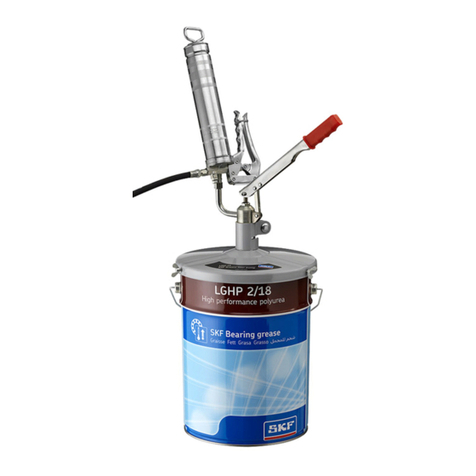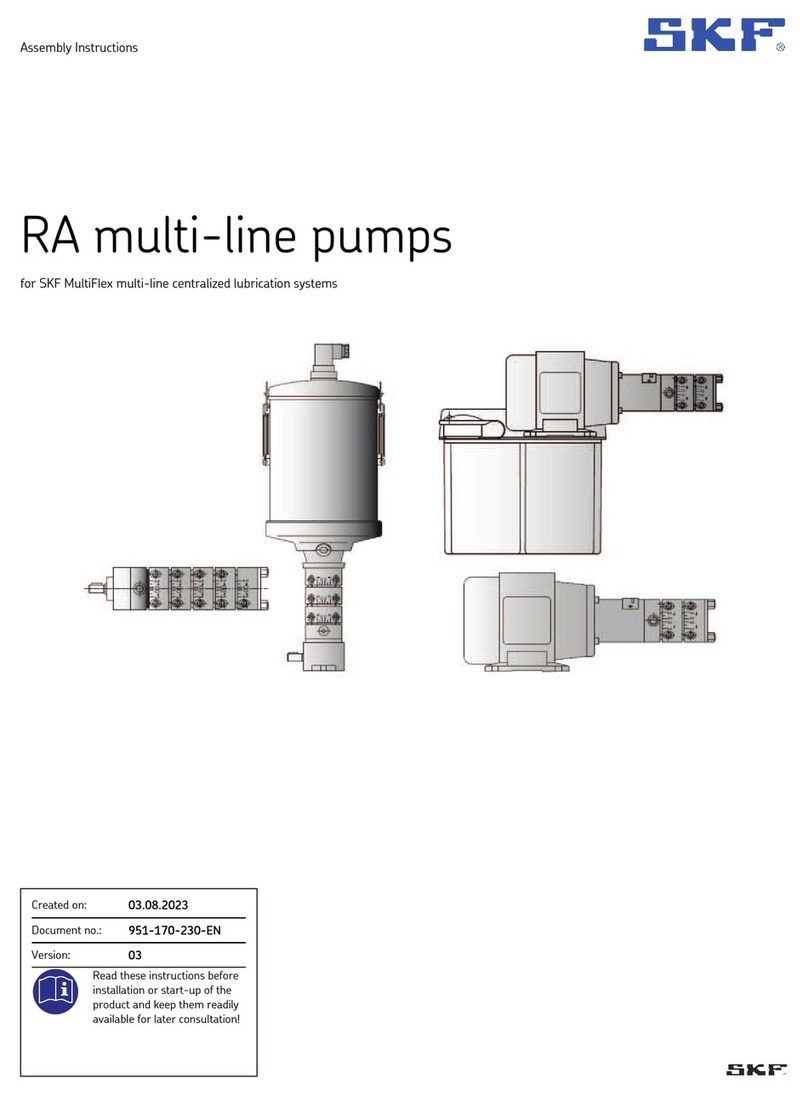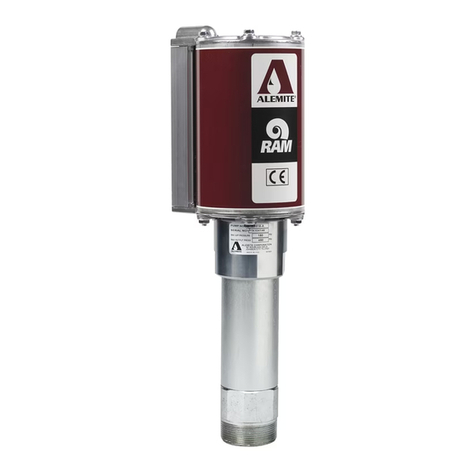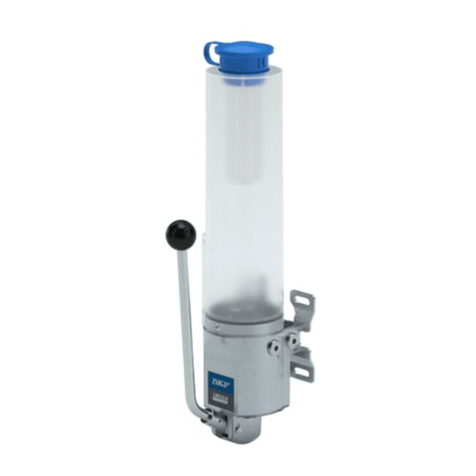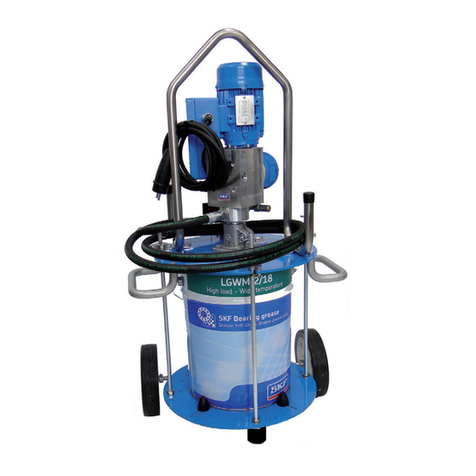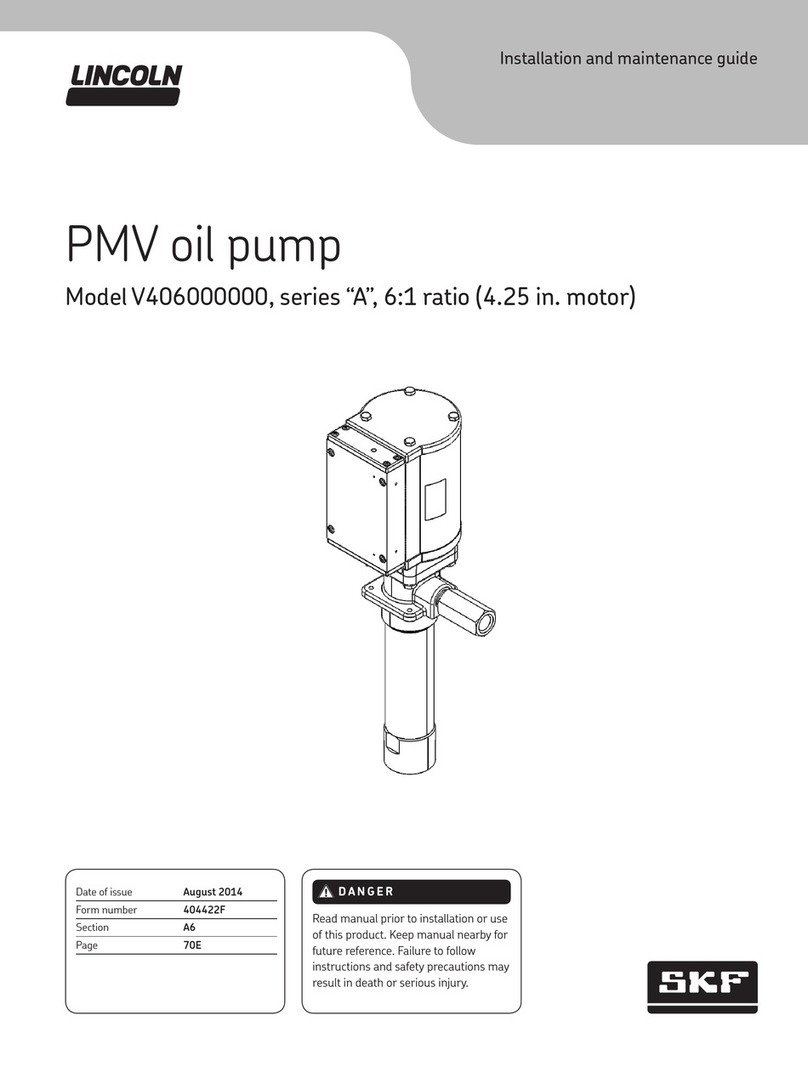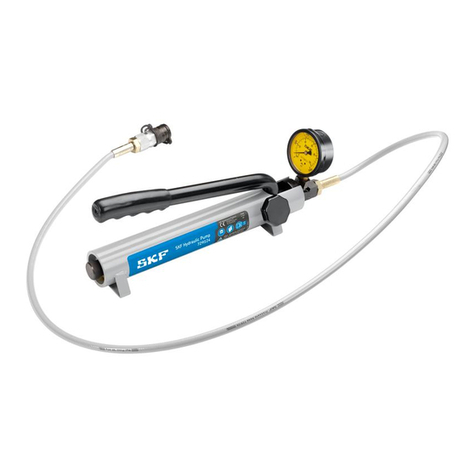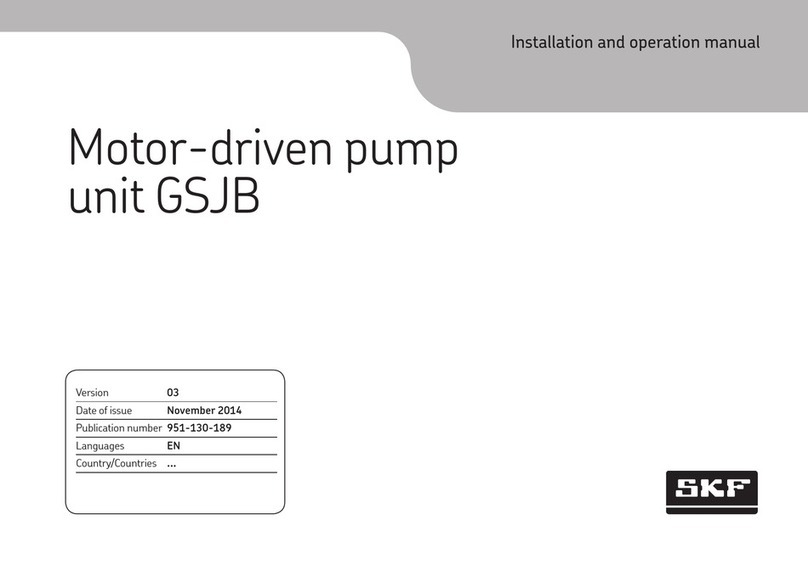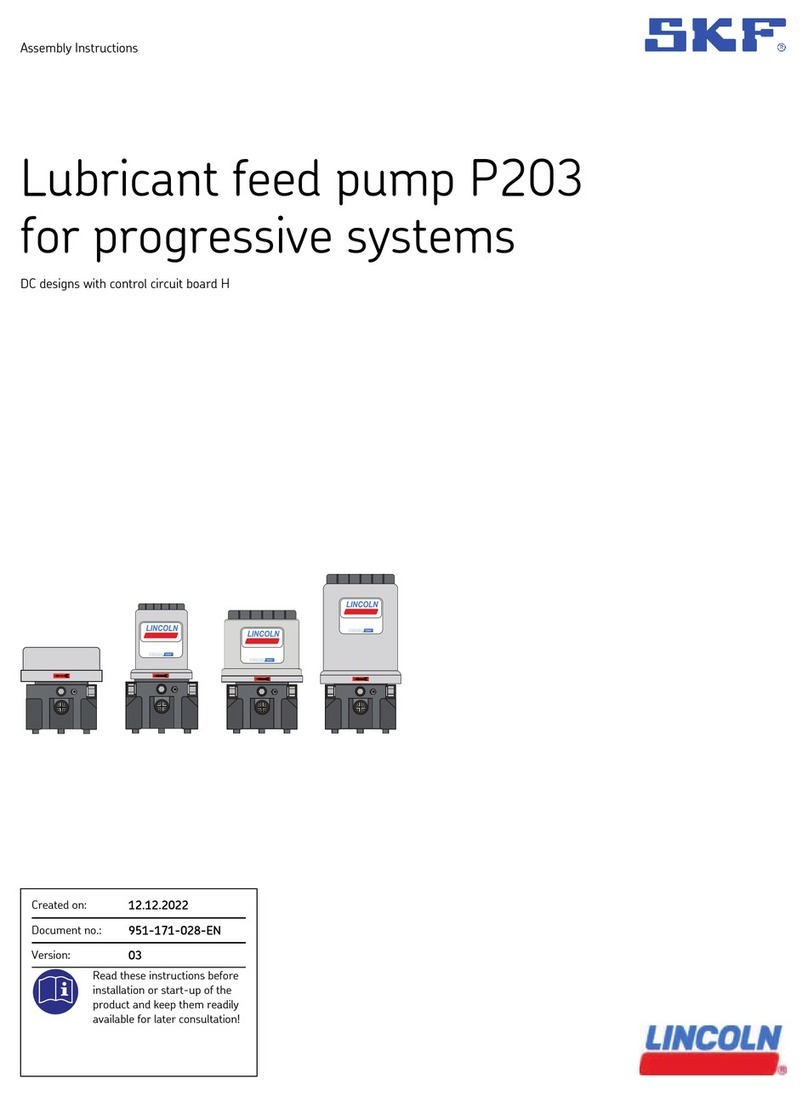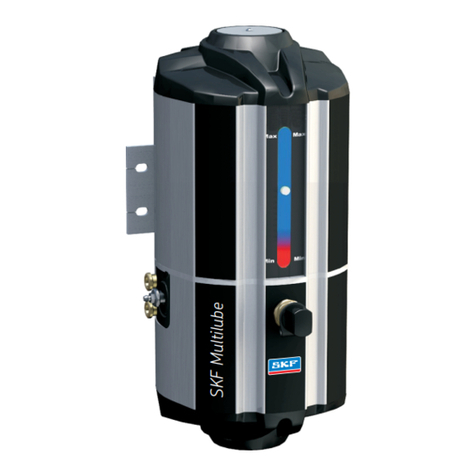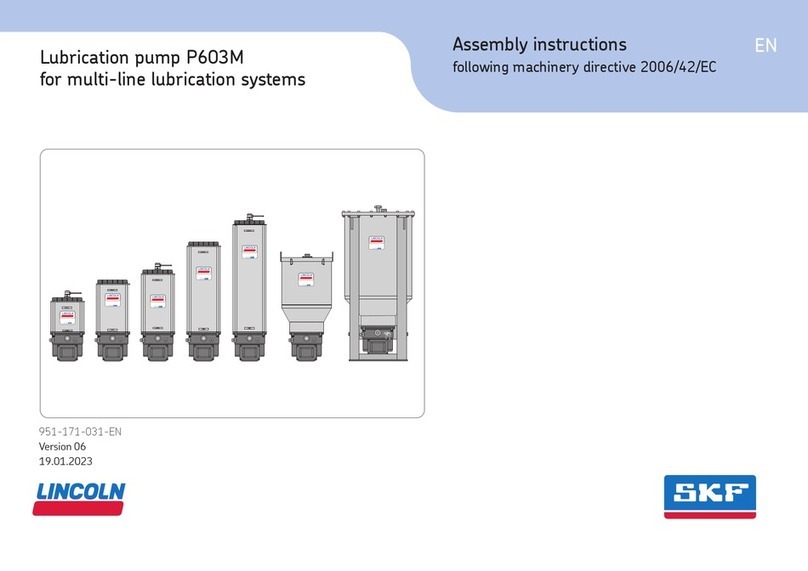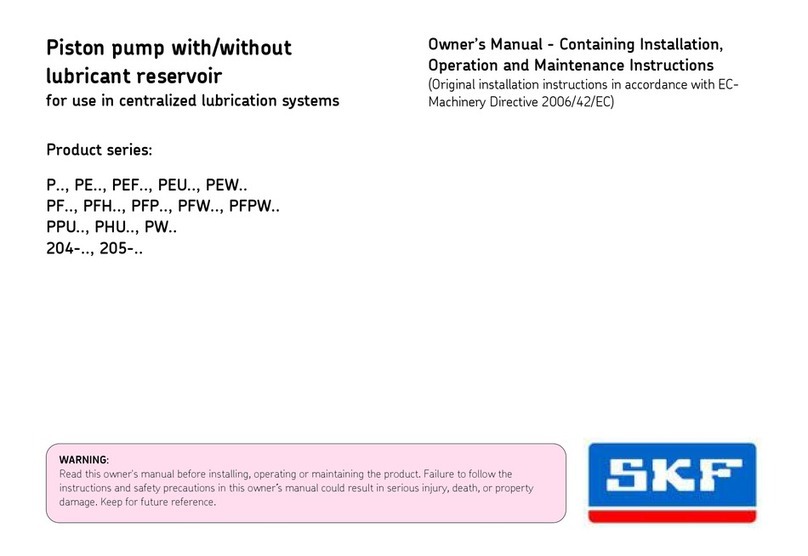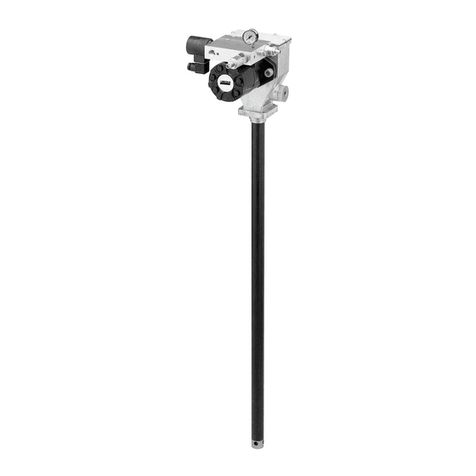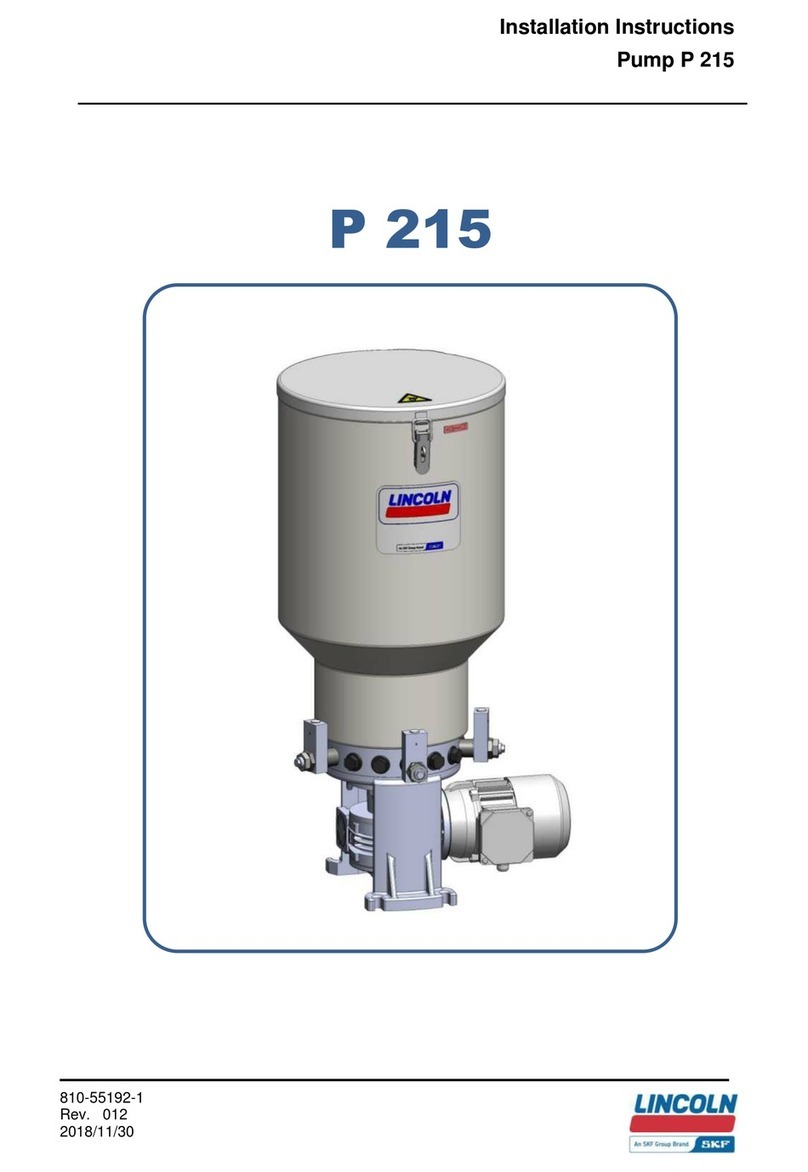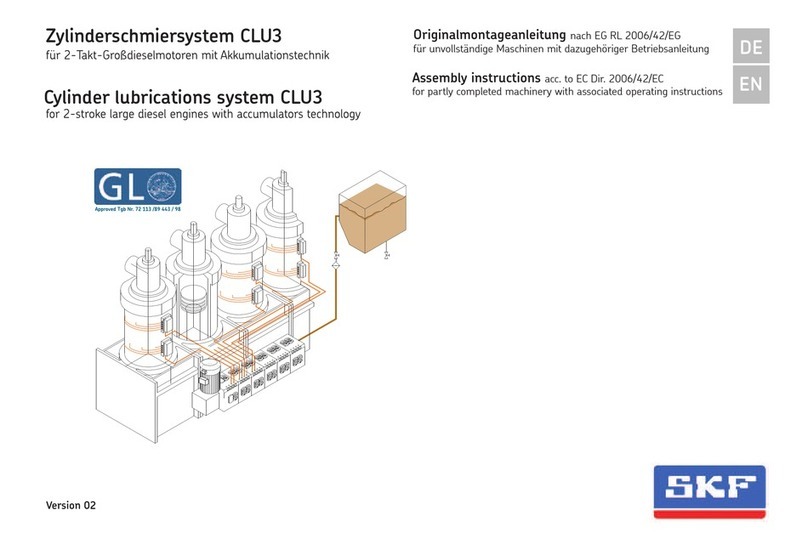
Vent valve service
Before starting this procedure, refer to
Troubleshooting, page , to determine
if vent valve is cause of failure.
Turn off and disconnect electric power
supply to pump assembly ().
Loosen vent hose () and
supply hose () (Fig. 2, page 7).
Remove screws () and
lockwashers ().
Hold base of vent valve in vice to remove
elbows (and ). Turn vent valve in vice
so vice jaws are gripping flats machined
on base of vent valve.
Remove hydraulic cylinder ()
(Fig. IPB 2, page 8).
Remove piston and u-cup assembly ()
from cylinder. If oil leakage was evident
from side of hydraulic cylinder, replace
packing.
Remove packing assembly (). If grease
leakage is evident from side of hydraulic
cylinder, replace packing assembly.
Inspect needle () and valve seat ().
If foreign matter is lodged and keeping
needle from sealing in valve seat, clean
and inspect for damage. If seat appears
damaged by nicks, grooves or scoring it
should be replaced. Remove
valve seat () from valve body ()
by placing a 3/4in open end wrench
onto flats and loosening seat. Use of
an adjustable wrench in place of open
end wrench may be necessary due to
accessibility of seat.
Replace valve seat () if damaged. Be
sure to remove and replace gasket ()
below seat.
Reverse above procedure to reassemble.
Needle () and hydraulic cylinder ()
inside diameter should be coated with oil
or grease to assist in assembly.
Upon reassembly, tighten valve seat ()
into valve body () using
25 lbf-ft (39 Nm). Tighten
hydraulic cylinder () onto valve
body () using 100 lbf-ft (135 Nm).
Follower
If follower foam appears to be damaged or
does not wipe sides of container effectively
service may be necessary.
Disconnect hydraulic supply from pump.
Remove hex head screws (),
lockwashers () and eyebolts () that
attach drum cover () to reservoir
assembly () (Fig. 2, page 7).
Lift pump assembly (), vent valve ()
and drum cover () out of
reservoir assembly ().
Remove follower assembly () from
reservoir assembly ().
Wipe off excess grease from
follower assembly ().
Loosen and remove eight locknuts ()
on top of follower assembly ()
(Fig. IPB 5, page 9).
Remove weighted follower plate ()
and follower foam (). Replace foam.
Reverse above procedure to reassemble.
Make sure long bolts are staggered with
short bolts and extend below follower.
Float switch
If float switch is not detecting proper grease
level, there are several possible reasons:
• Gauge operation
–Determine if gauge (wired to sensor
connection) is functional and wired
correctly.
• Sensor connection
–Determine if wires are securely
connected to both power supply,
gauge and sensor.
• Sensor function (Fig. IPB 3, page 8)
–Determine if sensor and components
are functioning properly as follows:
NOTE
Install elbow () facing down and rotate
approximately 30° toward vent hose to
prevent excessive rubbing of hydraulic hose
on pump.
○Is sensor body () securely
fastened to drum cover ()
(Fig. IPB , page ).
○Is sensor gasket () clamped
between sensor base and
drum cover (). If gasket is missing
or torn replace to prevent entrance of
water or contaminants into reservoir.
○Is float magnet () secured under
magnet cover ().
○Is float assembled properly with
“top” stenciled to top of float. If
float is missing, replace. If float is
upside down, invert. If bracket is
missing, replace.
○Is the wiper gasket () in place and
moving freely under wiper cover ().
If excessive grease is noticed on
sensor rod (), replace gasket.
Gasket should be able to move
approximately 1/8in (3 mm) from
center position. If gasket cannot move
freely, remove wiper cover () and
determine cause of restriction.
After all of above have been corrected and
sensor still does not indicate proper grease
level, it is defective and must be replaced.
Refer to 404394.
Safety unloader
valve
Safety unloader valve () is not serviceable
and must be replaced if malfunction is
apparent (Fig. 2, page 7). Upon
reassembly, tighten to 10 lbf-ft (13.5 Nm).
Safety unloader valve () is set to open at
4 750 to 5 250 psi (327 to 362 bar) lubricant
pressure. If pressure switch fails to operate
and shut off hydraulic supply to pump, safety
unloader valve will open at approximately
5 000 psi (345 bar) to relieve lubricant
supply line pressure (safety unloader valve
is preset and not adjustable).
5

